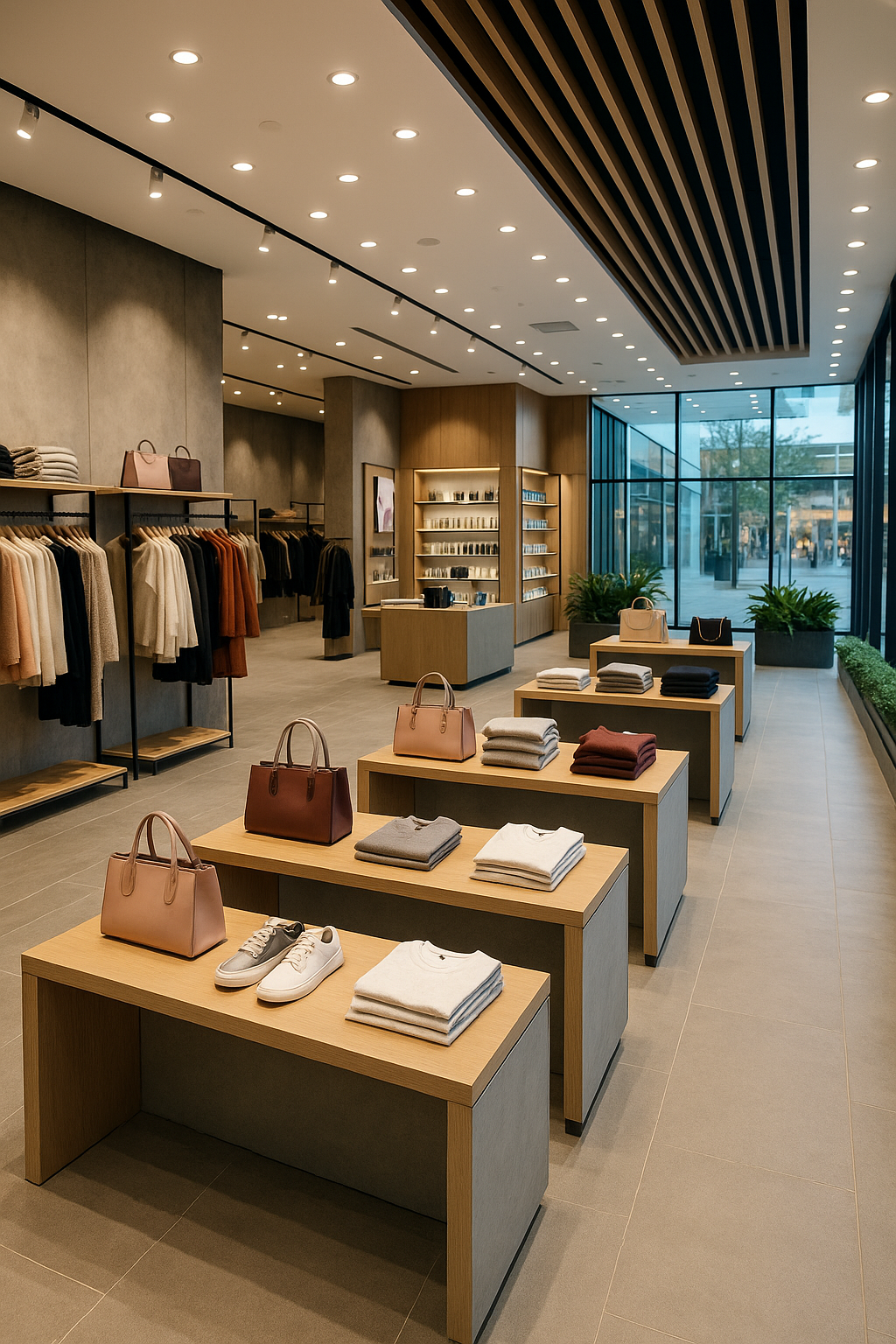In 2025, retail design is no longer just about visual merchandising or curb appeal. It's about experience architecture. As consumer behaviors shift and digital integration deepens, retail environments are being reimagined as hybrid destinations: part brand showroom, part fulfillment hub, part community space. This whitepaper breaks down the leading trends that are redefining how retailers design spaces that attract, convert, and retain customers.
1. Immersive Brand Storytelling
Retailers are creating more than just places to shop—they’re creating stories you can walk through. Spaces now include:
- Interactive digital installations
- Thematic buildouts aligned with brand identity
- Scent, sound, and lighting strategies for sensory impact
Why It Works: Multisensory design increases dwell time and builds emotional loyalty by making in-person shopping unforgettable.
2. Omnichannel Integration at the Architectural Level
Click-and-collect, BOPIS (buy online, pick up in store), returns kiosks, and QR-based product walls are now standard. Retail spaces are being physically redesigned to support frictionless digital interactions.
Design Features:
- Designated mobile pick-up lanes
- Smart lockers and digital POS zones
- Inventory visibility kiosks on the sales floor
Competitive Edge: Seamlessly merging digital and physical makes the store a true fulfillment and engagement center.
3. Smaller Stores, Bigger Impact
Retail footprints are shrinking, but their presence is expanding. Brands are choosing high-traffic micro-locations with modular designs that deliver high impact per square foot.
Tactics:
- Modular shelving and display systems
- Flexible fixtures for rapid merchandising changes
- Hyper-localized inventory and messaging
Outcome: Higher agility with lower operating costs.
4. Hospitality-Infused Experiences
Retail is taking cues from boutique hotels and restaurants—making comfort, ambiance, and service central to design. Think lounges, drink stations, charging areas, and personalized service desks.
Why It Works: Customers linger longer and spend more when they feel relaxed and welcomed.
5. Sustainability and Material Transparency
Eco-conscious consumers are now evaluating the materials used to build the space they shop in. Retailers are responding with:
- FSC-certified wood and recycled finishes
- Carbon-neutral displays
- Modular builds that reduce construction waste
Proof Point: A 2024 NielsenIQ survey found that 64% of U.S. shoppers are more likely to buy from brands with sustainable store environments.
6. Community and Event Integration
Retailers are doubling as neighborhood hubs. Stores are being designed with space for:
- Local art installations
- Pop-up events and workshops
- Community noticeboards and gathering zones
Impact: Strengthens brand connection and increases repeat foot traffic through experiential programming.
7. Data-Driven Layout Optimization
With sensors, heatmaps, and AI-powered video analytics, retailers are designing layouts that evolve in real-time.
Technologies in Use:
- Footfall tracking and zone engagement analysis
- Smart shelving that tracks product interactions
- A/B testing layouts via modular floor plans
Design Advantage: Continual optimization for traffic flow, conversion rates, and merchandising.
Conclusion: Designing Retail Spaces for Resilience and Revenue
The most successful retail environments of 2025 blend utility, beauty, and digital fluency. Every element of the space must justify its existence by contributing to a richer customer experience and better operational efficiency. For developers, designers, and operators, embracing these trends is essential not only to stay relevant but to lead the market.
At ABS Building Systems Integrators, we bring these insights to life—crafting retail environments that perform as beautifully as they look. Whether you’re rethinking a flagship or scaling your store footprint, we’re your partner in future-ready retail design.
Let’s Build What’s Next. Contact us to bring your retail vision to life.
Sources and Research
- Gensler Experience Index for Retail – https://www.gensler.com/
- CBRE Global Retail Trends 2024 – https://www.cbre.com/
- McKinsey Future of Retail Report – https://www.mckinsey.com/
- NielsenIQ Consumer Sustainability Insights – https://nielseniq.com/
- Shopify Future of Commerce Report – https://www.shopify.com/
- Retail Dive Tech Trends 2024 – https://www.retaildive.com/




